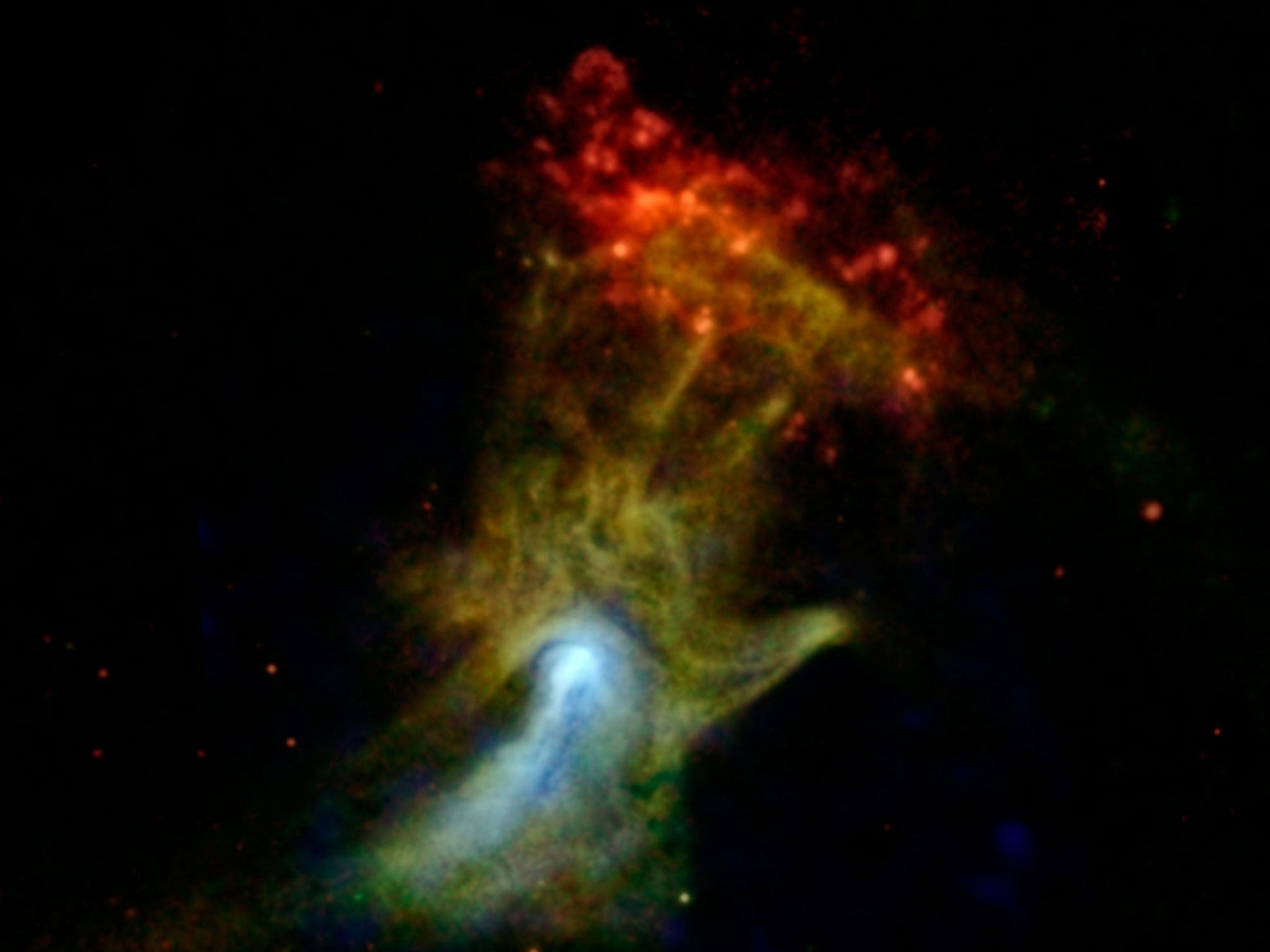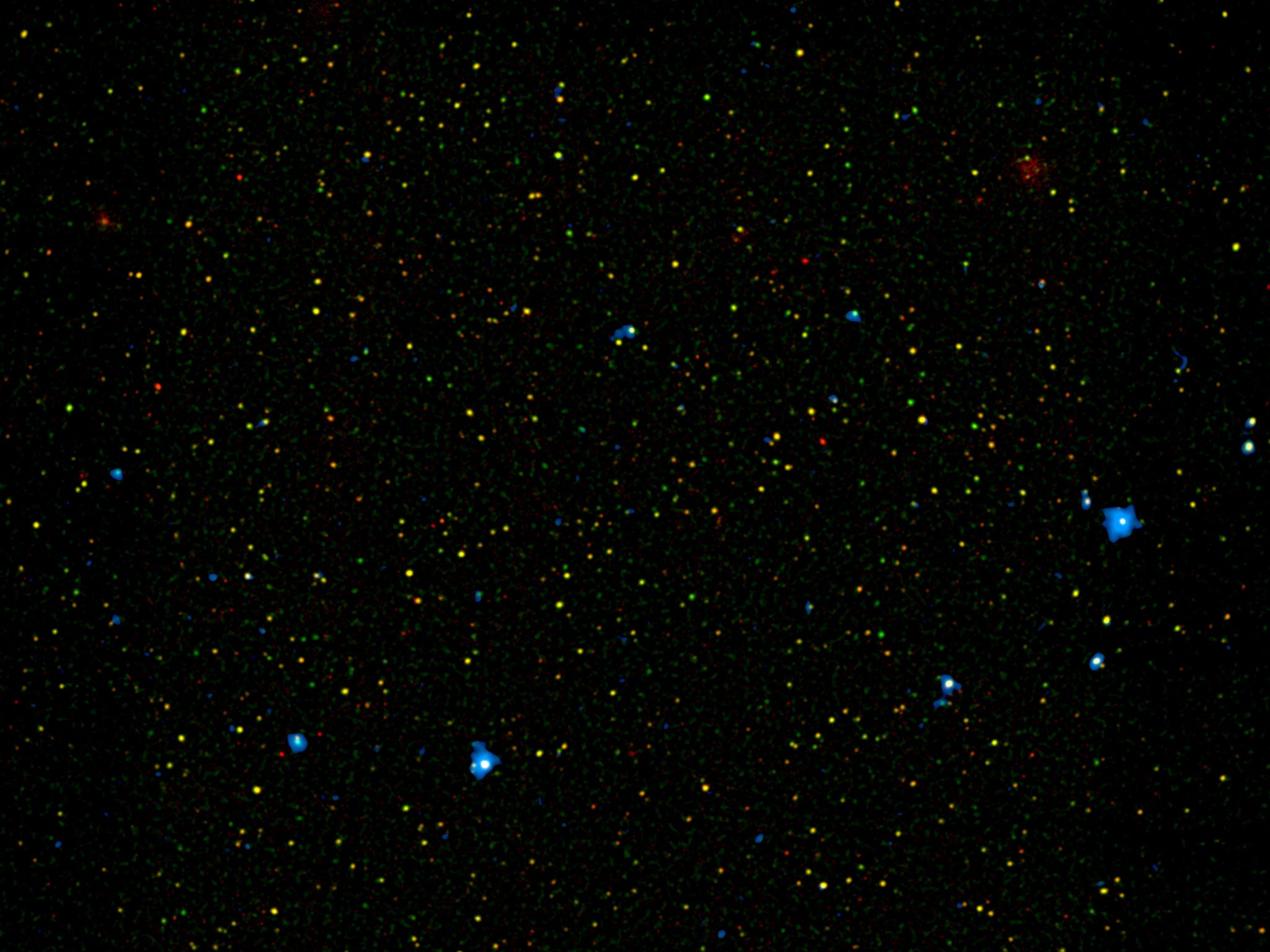New 'Hand of God' photo captured by Nasa
NuSTAR captures dead star and distant black holes

Your support helps us to tell the story
From reproductive rights to climate change to Big Tech, The Independent is on the ground when the story is developing. Whether it's investigating the financials of Elon Musk's pro-Trump PAC or producing our latest documentary, 'The A Word', which shines a light on the American women fighting for reproductive rights, we know how important it is to parse out the facts from the messaging.
At such a critical moment in US history, we need reporters on the ground. Your donation allows us to keep sending journalists to speak to both sides of the story.
The Independent is trusted by Americans across the entire political spectrum. And unlike many other quality news outlets, we choose not to lock Americans out of our reporting and analysis with paywalls. We believe quality journalism should be available to everyone, paid for by those who can afford it.
Your support makes all the difference.A new image of the pulsar wind nebula known as the 'Hand of God' has been captured by US space agency Nasa's Nuclear Spectroscopic Telescope Array (NuSTAR).
The photograph captured by the telescope shows the nebula 17,000 light-years away, which is powered by a dead, spinning star called PSR B1509-58. The pulsar itself is just 19 kilometres long, but spins around nearly seven times every second.
As it spins, it throws out particles upheaved during the star's death, which interact with magnetic fields around the ejected material, causing it to glow with X-rays.
For Nasa, one of the biggest remaining mysteries surrounding the object is whether the pulsar particles are interacting with the material in a specific way to make it look like a hand, or if the material is in fact shaped like a hand.

"We don't know if the hand shape is an optical illusion," Hongjun An of McGill University, Montreal, Canada told Nasa. "With NuSTAR, the hand looks more like a fist, which is giving us some clues."
NuSTAR has imaged the structure in high-energy X-rays for the first time, shown in blue. In the image, lower-energy X-ray light previously detected by NASA's Chandra X-ray Observatory is shown in green and red.
Fiona Harrison, the mission's principal investigator at the California Institute of Technology in Pasadena, California said the telescopes unique viewpoint is allowing them to see "the highest-energy X-rays" and is "showing us well-studied objects and regions in a whole new light."
The telescope also produced another image of a range of supermassive black holes lit up. Nasa said all of the dots in this image are active black holes tucked inside the hearts of galaxies, with colors representing different energies of X-ray light.
Join our commenting forum
Join thought-provoking conversations, follow other Independent readers and see their replies
Comments